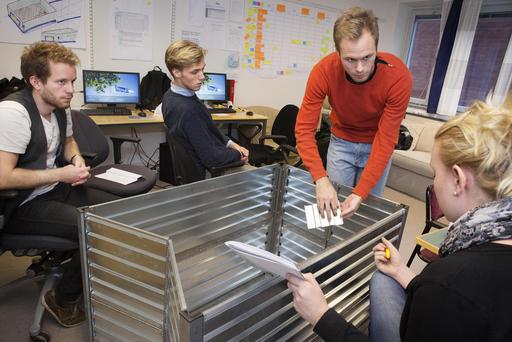Visa version
Visa
< föregående
|
nästa >
Jämför
< föregående
|
nästa >
4.4.2 Prototyping
4.4.2 Prototyping
Prototypes are made to figure and communicate functionality; they can be physical or analytical/virtual. Prototypes also work as concrete evidence of the progression of the specific project. The process of prototyping includes team members collaborating in a number of iterative loops in which reflecting, discussing, listening and trying again are essential aspects.31
Berglund and Leifer32 discuss the benefits of using prototypes in educational settings: “By using prototyping as a core activity in the courses, communication between project members, potential users and industrial partners becomes relatively easy, less abstract and creates fewer unnecessary misunderstandings”. They also touch upon the balance between focusing on the product and the learning:
“Prototyping supports idea generation, conceptualisation, design exploration, evaluation, communication, and construction. Because it can be an overwhelming undertaking to create a single prototype that strives to achieve all of these goals, it is important to be focused on the objectives. From an educational viewpoint, achieving learning objectives overshadows the importance of technical performance, even though they tend to go hand in hand.”
Examples of prototyping in Integrated Product Development: Throughout the program, the students produce several prototypes from idea to final prototype. In the beginning these are simpler prototypes in paper, plastic, wood, and cardboard to quickly get feedback about the product from the development team, users and project partners. Subsequent development steps can contain more elaborated 3D prints based on CAD. As the project progresses, the prototypes become functional to enable testing of the functions. The ultimate goal is to have a full functional product/prototype when the project is completed.

students working on their prototype, Integrated Product Development.
Degree Programme in Design and Product Realisation: Each year, all the students in the programme present their products/prototypes at an exhibition called “DoP-Expo”. Here, exciting and creative projects are presented, projects that students, individually or in groups, worked with during the fall semester in grade one, two and three.
Suggestion: As stated earlier, start with the ILOs when preparing the methods you want to use in your course. Also consider the presentation methods used in the relevant field of industry/work, since this will help students develop relevant skills. If prototyping and the methods used in prototyping are required in the profession, assure that the students will have several opportunities during their education to learn.